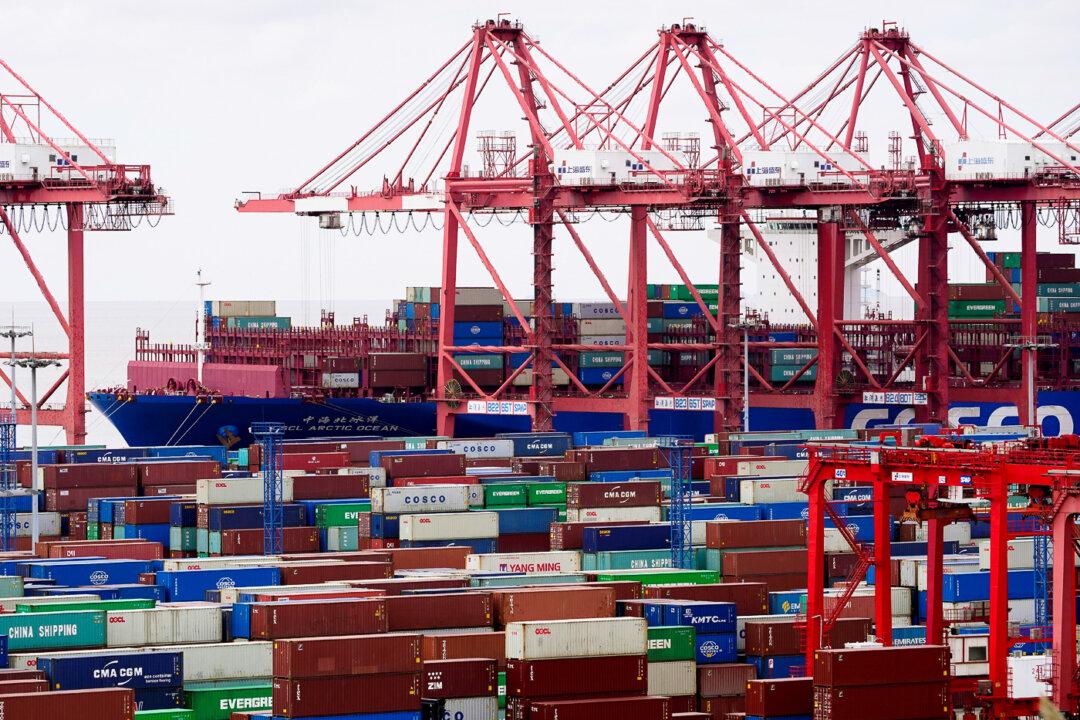Russia’s decision to invade Ukraine has created untold hardship. So also have the sanctions imposed on Russia by the United States and its allies. Everyone in assessing these matters should keep in mind the relative degrees of suffering.
Worst is the pain imposed on the Ukrainian people, as is apparent in the pictures and reports filtering out of that unfortunate country.
Second is the suffering among Russian people as the sanctions wreck that country’s economy. Some might see just deserts in this, for Vladimir Putin and his cronies certainly, but also certainly not for ordinary Russians, none of whom had say in the Kremlin’s decision.
Far less, though not insignificant, is the pain being inflicted on the U.S. economy. This lesser bit is the subject of this discussion.
America’s most significant burden comes through the rising cost of energy. In just the weeks since Russia invaded and the sanctions went into effect, the price of gasoline at the pump has soared some 17.3 percent from a national average of $3.58 a gallon to $4.20, a record. The price of a barrel of crude oil has risen 20 percent, and the price of natural gas has jumped almost 10 percent. This is a significant burden on working men and women across the country, though nowhere near the existential threat faced by Ukrainians.

The extent of the price jump no doubt surprised Washington. The sanctions, though severe in many respects, pointedly spared Russian energy supplies on world markets. There was no mention of oil and gas in the original announcement. Sanctions aimed at Russian finance and purchases of technologies.
Even when casting Russia out of the SWIFT communications network for global financial transactions, the United States and its allies carved out an exemption for the sale of Russian energy. None of this aimed to relieve the strain on Russia. Rather it aimed to avoid the considerable hardship an energy cutoff would have imposed on a Europe that is highly dependent on Russian sources, most especially Germany. To a lesser extent, the exemption for Russian energy also aimed to spare pain to American consumers, who were already suffering from a generalized inflation, including rapidly rising energy prices.
Despite official exemptions, problems immediately arose getting Russian supplies to consumers. Carriers were reluctant to take Russian cargos and some insurers refused to cover them. Unofficial sources suggest that despite the allowances permitted in the sanctions regime, some 70 percent of Russian oil and gas cannot find a destination.
At the same time, consumers of oil and gas around the world, including in the United States, went into something of a frenzy of pre-ordering and hoarding. They knew, especially in North America, that there was no fundamental shortage. Even the subsequent decision by the White House to ban import of Russian oil and gas was of little direct concern, since these amount to barely 2.5 percent of total U.S. energy consumption.
Buyers instead acted on uncertainties about the future—that the sanctions regime would eventually ban all purchases of Russian energy or that Putin, to spite his tormentors, would in extremis deny Russian energy supplies to the world, an economically suicidal act to be sure, but plausible nonetheless in an economy that is otherwise imploding. The sudden demand lifted prices the world over.
Matters would have been less stressful had the Biden administration not already shut down a significant portion of North American energy production. On President Joe Biden’s first day in office, he interrupted the potential flow of Canadian oil to market by closing the Keystone XL Pipeline.

For the last 14 months, executive agencies have at every turn discouraged both conventional drilling and fracking. According to the Energy Information Administration, domestic U.S. production of fossil fuels today stands more than 16 percent lower than in December 2019.
The United States has shifted from an energy surplus country to a net importer of oil and gas. Had these domestic sources still existed, there can be little doubt that the recent surge in oil and gas prices would have been less extreme and so also would have been the associated hardships.
This immediate price pain seems nonetheless destined to dissipate over the longer haul. According to the International Energy Agency (IEA), Russia at most produces some 10 percent of global energy needs. The agency’s analysis indicates that in time alternative sources could substitute for the loss of Russian supplies, including perhaps in America, if the White House were amenable.
Of course, it would take time to work up these marginal supplies and bring them to where they are needed. Once that was done, some of today’s most acute energy price pressures would abate, even if the fighting still raged and problems with Russian energy became worse. In the interim, however, those price pressures will inflict hardships.
Aside from energy, the sanctions seem to have had little ill effect on the average American. Neither the war nor the sanctions seem to have exacerbated general supply chain problems, which were already otherwise dissipating.
The ban on technology sales is a minor matter for the U.S. economy generally. All U.S exports to Russia amount to only about one half of one percent of America’s gross domestic product (GDP). Technology is only a portion of that amount, though the financial sanctions will likely stop all such sales.
The halt in technology sales may curtail the revenues of individual firms with a Russian orientation, but an informal review of corporate statements indicates that the worst exposure amounts to less than 15 percent of any company’s total sales and a lot less for most. Such a loss would no doubt hurt the stockholders of particular firms, as the Russian nationalizations of American assets in that country will hurt other companies. But the effect will do little in the life of the average working man or woman, except perhaps bring some correction to the value of their IRA or 401(k). These effects certainly seem unlikely to lead to layoffs.
Similarly, the severe financial sanctions, though a major hardship for Russia, should do little to disrupt the economic life of most Americans. Any problems will land mostly on the elites. Managing the restrictions, for example, will cause headaches and impose expenses on U.S. financial institutions and their regulators, but those suffering in this way are in the grand scheme of the U.S. economy a small group.
Some investment banks, which in the past have made money by helping the Russian government and companies gain financing in U.S. and European markets, will lose a revenue source, but likely not a big portion of their overall income. Investments that hold Russian securities will suffer disruptions and losses, some temporary and some permanent. But apart from what must be a small effect on most IRAs and 401(k)s, these matters will do little to the economic and financial life of most Americans.
This is the way things stand now. The situation, as they say, is fluid and could change rapidly. As always in war, the unknowns seem always to overwhelm plans, even for nations and populations not directly involved. So far, the U.S. economy and its people have gotten away with relatively little strain. The future holds only surprises.





